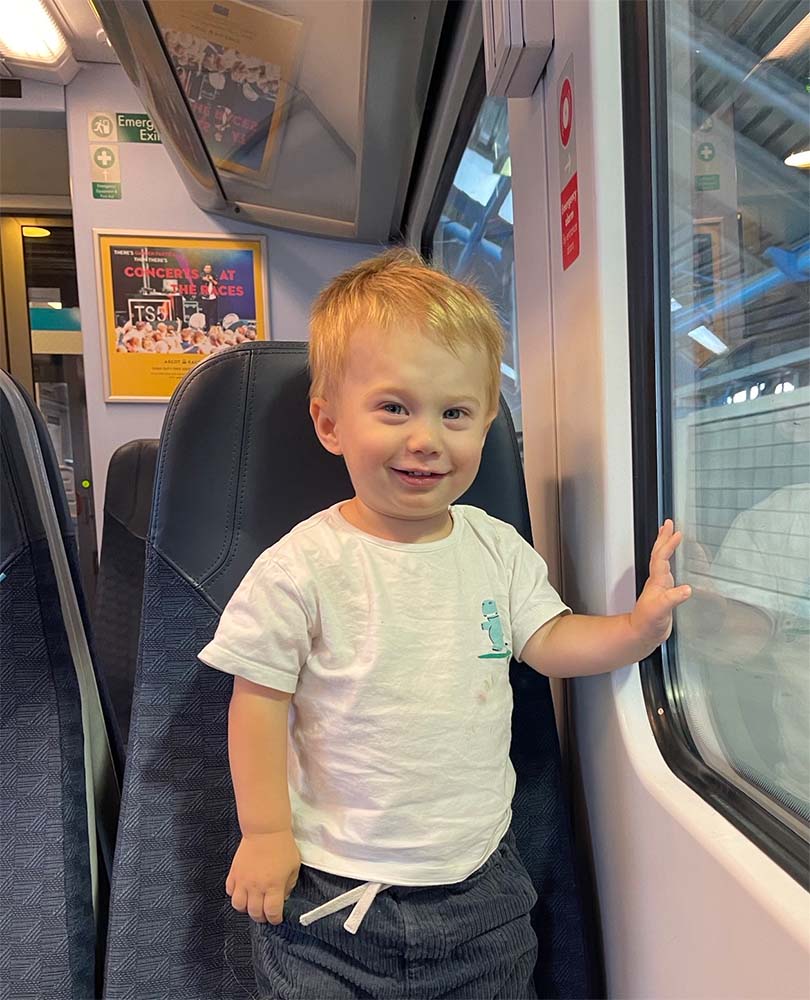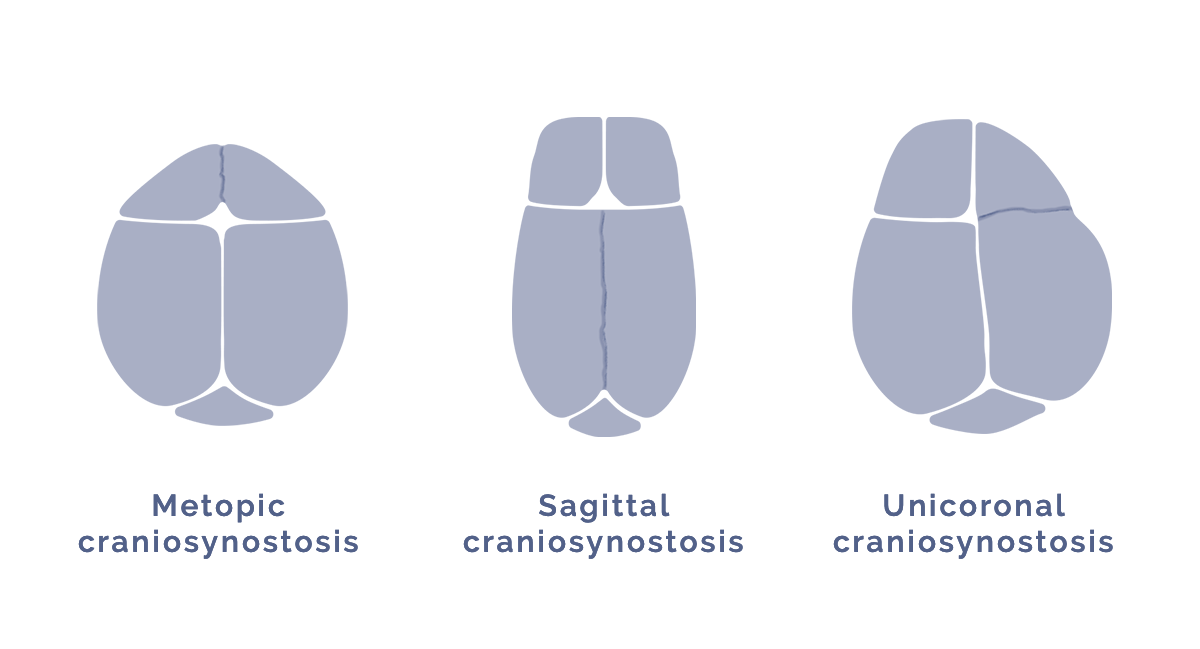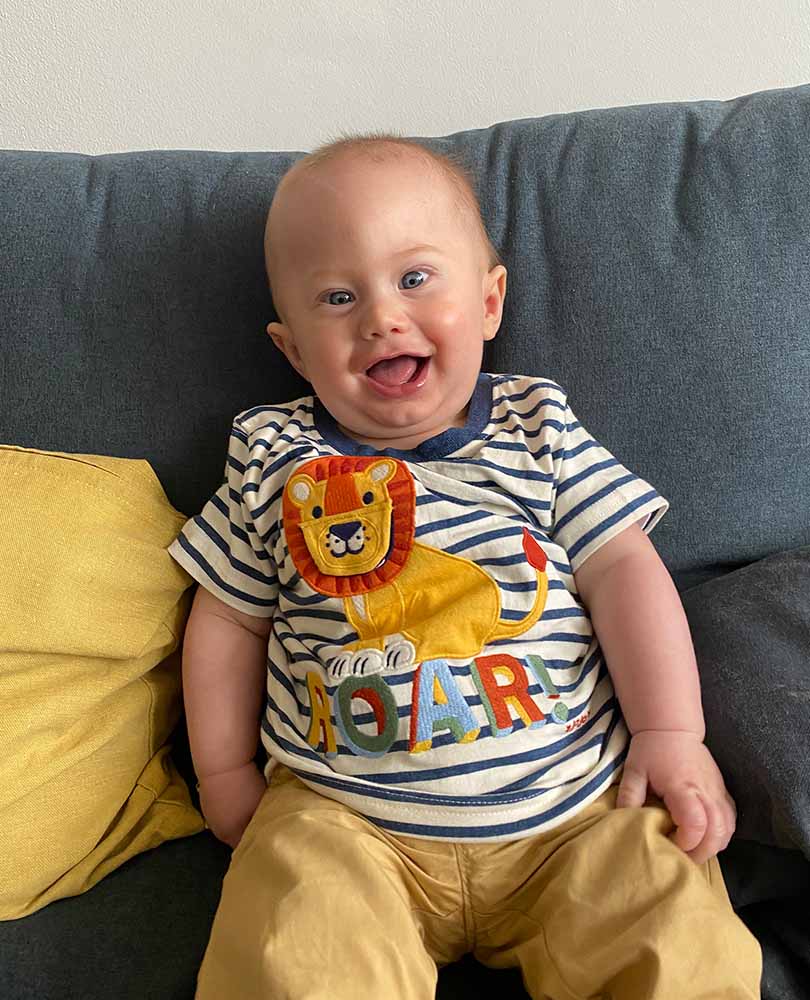
Jacob after helmet therapy treatment following craniosynostosis surgery
25 August 2023
Read about Jacob’s helmet therapy treatment journey following craniosynostosis surgery at Great Ormond Street Hospital.
Jacob has not had an easy start to his young life. In utero, he was diagnosed with a heart problem and surgery was arranged for when he was 6 months old. It was in preparation for this surgery that he was then diagnosed with Metopic Craniosynostosis and was referred to Great Ormond Street Hospital (GOSH).
At birth, a baby’s skull is made up of bony ‘plates’ separated by ‘sutures’. The sutures eventually fuse so that the skull’s role as a protective shell for the brain is complete. In Craniosynostosis one or more of the sutures prematurely fuse, either in the womb before the baby is born or after delivery. It can restrict the growth of the skull from the fused suture, potentially restricting space for the growth of the brain, therefore affecting the development of the brain.
There are different forms of the condition, depending on which part of the skull is affected. Metopic Craniosynostosis is one of them, where the suture running down the centre of the forehead to the bridge of the nose fuses prematurely. The resulting head shape is known as trigonocephaly characterised by the forehead being pointed and triangular in shape.

Different types of craniosynostosis
The conventional treatment for craniosynostosis has been open cranial surgery – to correct the shape of the head and allow for normal brain growth. GOSH is pioneering a new approach - the removal of the fused suture by endoscopic strip craniectomy as an alternative, less intrusive option than the traditional cranial surgery. The London Orthotic Consultancy (LOC) is one of the clinics parents are referred to for the post-operative orthotic treatment required.
Let Lizzie (Jacob’s mother) take up the story: “Given what we had already been through the whole process of treatment seemed easier by comparison. The communication from the team at LOC was excellent, we knew exactly what was going on and when Jacob had his surgery at GOSH on 8 June 2022, his first protective helmet was fitted at LOC on 24 June.
While I was a bit taken aback by the appearance of the helmet as it covered part of his forehead (this is actually necessary to protect the operative site), wearing the helmet didn’t bother Jacob at all; it fit very well, and he was in no discomfort. We had a bit of a wobble when it got very hot last year as he got very sweaty unsurprisingly. But we left the helmet off for a couple of days and everything was fine and then we were on to the second helmet which was a completely different design with in-built ventilation. And then much quicker than we expected Jacob’s treatment was complete, he was discharged this May. What a great feeling that was.”

Jacob at the start of his helmet therapy journey
“Finally, I would like to say a big thank you to Jo Drake (LOC’s Head of Plagiocephaly and Craniosynostosis) who was the clinician we saw throughout Jacob’s treatment. She was amazing, obviously a perfectionist in her approach to everything – the helmets had to fit perfectly. And she was so caring and friendly it was always a pleasure to come in to see her for Jacob’s reviews.”
An update on LOC’s treatment protocol for Craniosynostosis:
Since Jacob was treated, LOC has improved its treatment protocol as we have found that in the majority of cases, there is no need for the initial Cranioband that Jacob had to wear. We have developed the fully enclosed, 3D-printed Cranio Lite helmet. This new bespoke cranial helmet both protects and corrects the baby’s head shape after surgery as healing continues and the baby undergoes its growth spurt, as in the case for LOCband treatment for positional plagiocephaly.
If you are concerned that your baby might have craniosynostosis you can get immediate advice from one of our specialist clinicians. Please contact us to book an appointment.
The LOCband is non-invasive and works by applying gentle, constant pressure over the areas of the baby’s skull that are most prominent while allowing unrestricted growth over the flattened areas. The band consists of a soft foam layer inside a thermoplastic shell. As the baby grows, the band will be adjusted frequently to gently guide the skull into a more symmetrical shape.
The optimum age for treatment is between four and seven months.
This is because the skull is most malleable at this age and improvements to head shape tend to take less time and are more dramatic. That is not to say that helmet therapy should be ruled out if the baby is older than seven months. Routinely, babies up to the age of 16 months can be treated very successfully.
The cut off age is around 18 months when the fontanelles (soft spots on the head) are no longer malleable. As babies grow and develop at different rates, it is always worth checking if you are not sure. There have been cases where a baby’s fontanelles have not fused yet by the age of 18 months, who have achieved successful, but less-marked results with cranial remoulding therapy.
Yes - All babies that have completed their course of treatment with us have achieved a measurable improvement in head shape. However, you don’t have to take our word for it.
Recent independent research conducted by a University Hospital in Germany has endorsed the treatment for babies with moderate or severe plagiocephaly.
A larger, retrospective study has just been published that found complete correction was achieved in 94.4% of babies treated with helmet therapy.
The results were conclusive: repositioning achieved acceptable correction in 77.1% of cases, but 15.8% were moved onto helmet therapy because re-positioning was not working. Meanwhile, 94.4% of the infants who started in the helmet-treated group achieved full correction, as did 96.1% of those who were transferred from the repositioning group into the helmet-treated group.
Further information can be found on our Plagiocephaly Research page.
This is very much dependent on how fast your baby is growing. The faster the growth, the more frequently your baby will be seen so that the helmet can be adjusted. In general, reviews will happen at two to four-week intervals.
The price of treatment covers: